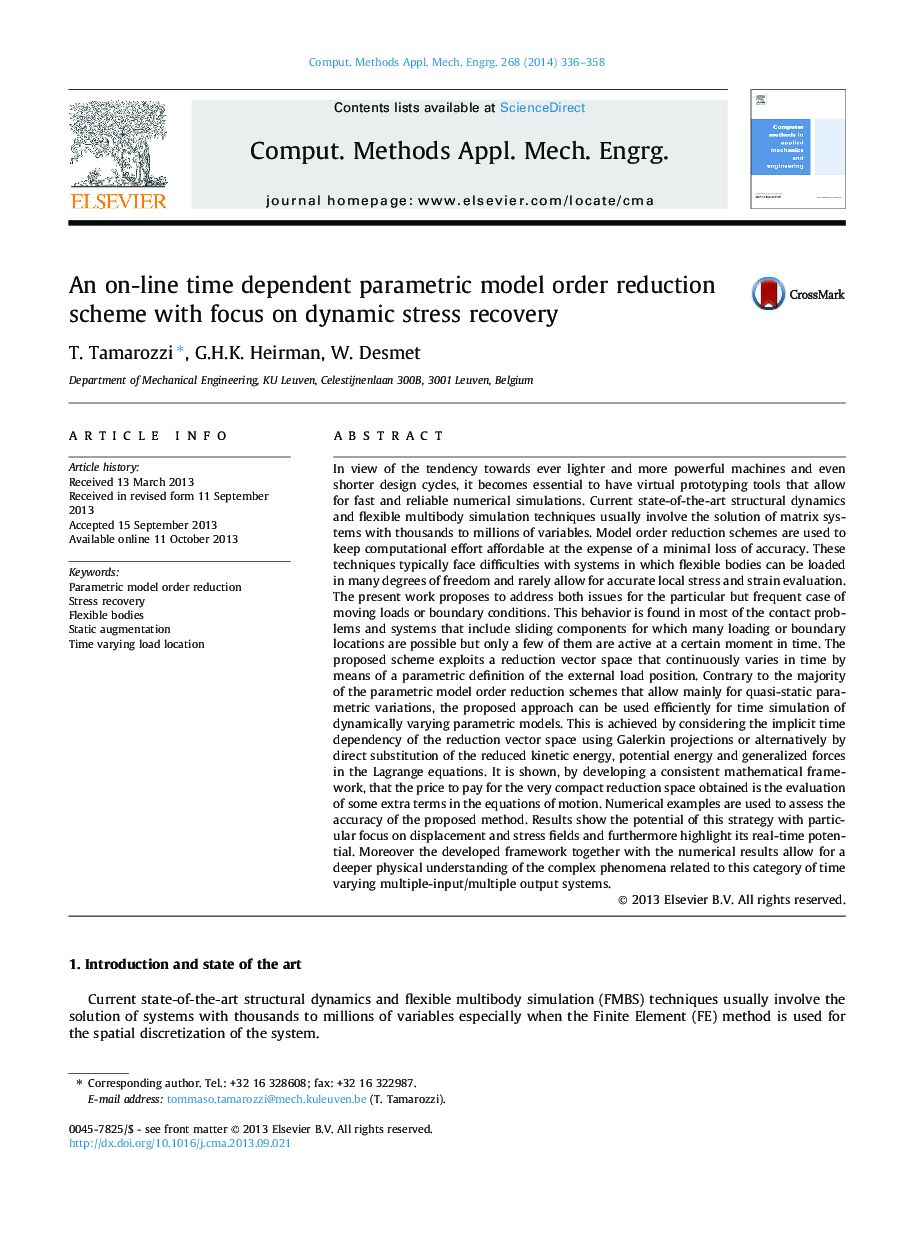| Article ID | Journal | Published Year | Pages | File Type |
|---|---|---|---|---|
| 498041 | Computer Methods in Applied Mechanics and Engineering | 2014 | 23 Pages |
In view of the tendency towards ever lighter and more powerful machines and even shorter design cycles, it becomes essential to have virtual prototyping tools that allow for fast and reliable numerical simulations. Current state-of-the-art structural dynamics and flexible multibody simulation techniques usually involve the solution of matrix systems with thousands to millions of variables. Model order reduction schemes are used to keep computational effort affordable at the expense of a minimal loss of accuracy. These techniques typically face difficulties with systems in which flexible bodies can be loaded in many degrees of freedom and rarely allow for accurate local stress and strain evaluation. The present work proposes to address both issues for the particular but frequent case of moving loads or boundary conditions. This behavior is found in most of the contact problems and systems that include sliding components for which many loading or boundary locations are possible but only a few of them are active at a certain moment in time. The proposed scheme exploits a reduction vector space that continuously varies in time by means of a parametric definition of the external load position. Contrary to the majority of the parametric model order reduction schemes that allow mainly for quasi-static parametric variations, the proposed approach can be used efficiently for time simulation of dynamically varying parametric models. This is achieved by considering the implicit time dependency of the reduction vector space using Galerkin projections or alternatively by direct substitution of the reduced kinetic energy, potential energy and generalized forces in the Lagrange equations. It is shown, by developing a consistent mathematical framework, that the price to pay for the very compact reduction space obtained is the evaluation of some extra terms in the equations of motion. Numerical examples are used to assess the accuracy of the proposed method. Results show the potential of this strategy with particular focus on displacement and stress fields and furthermore highlight its real-time potential. Moreover the developed framework together with the numerical results allow for a deeper physical understanding of the complex phenomena related to this category of time varying multiple-input/multiple output systems.
